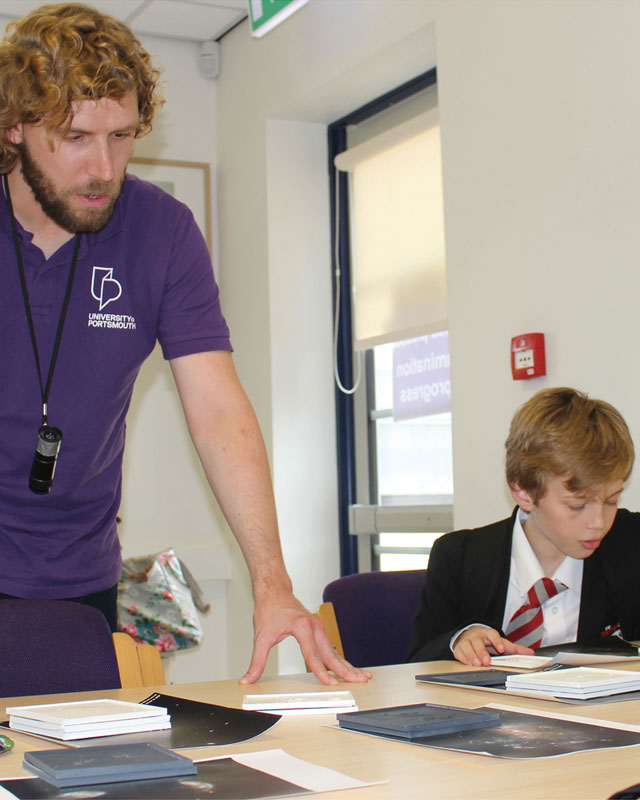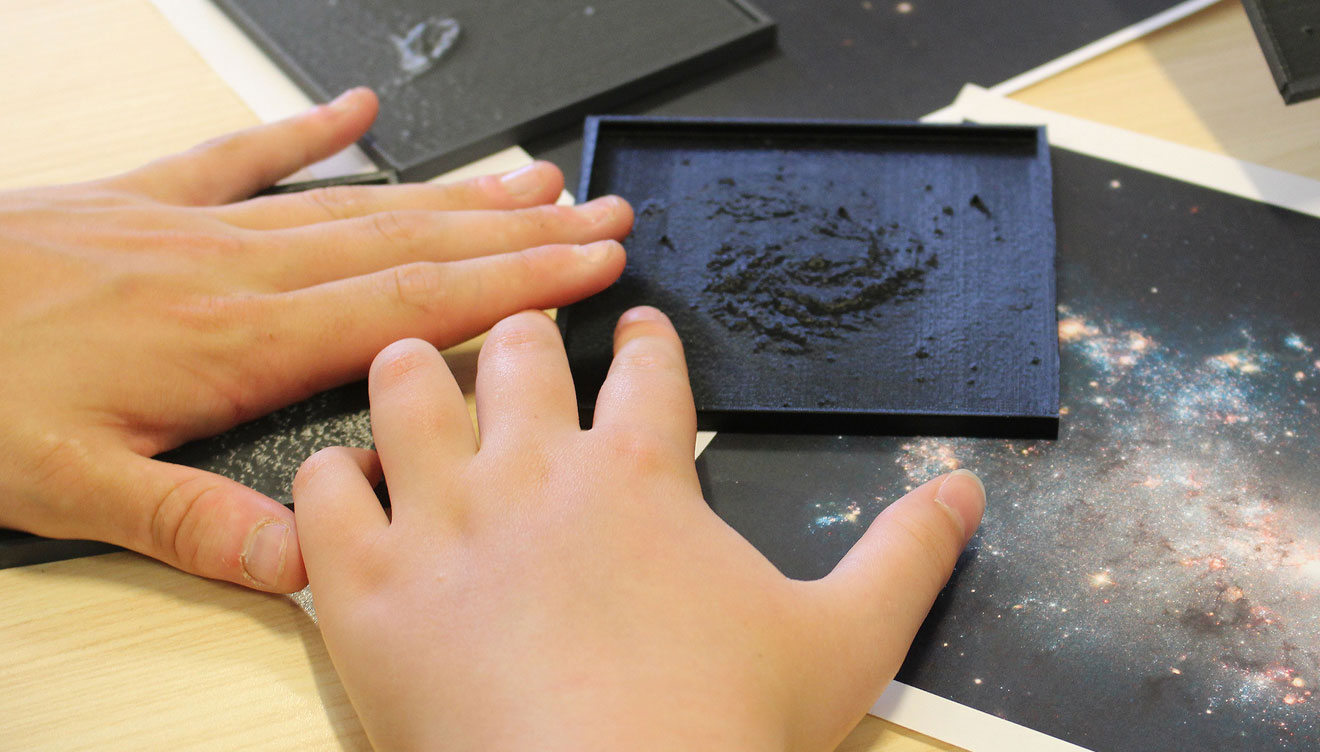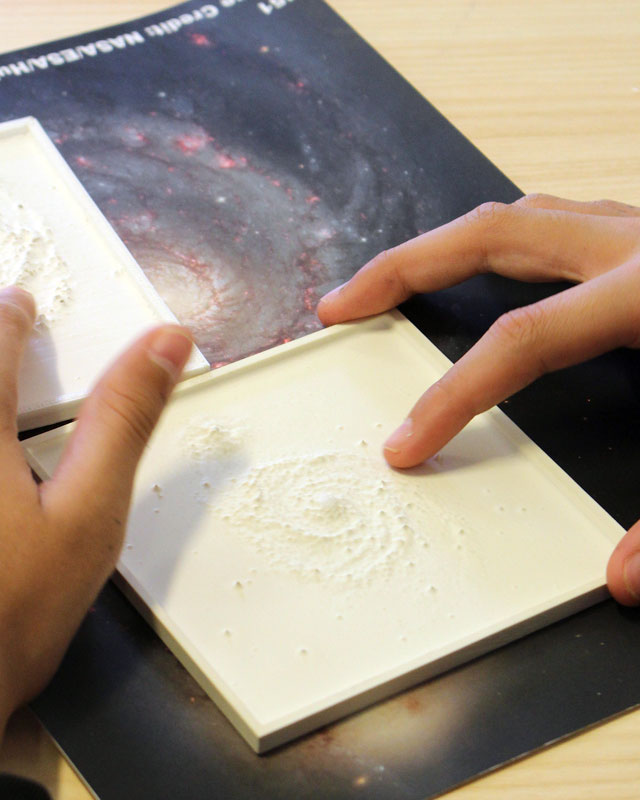Bringing the cosmos to life through 3D printing and soundscapes
Dr Nicolas Bonne, a vision-impaired astronomer, is translating scientific information into forms that can be experienced by the blind and vision-impaired through experimenting with 3D printing and soundscapes.
Astronomy’s biggest impact on people often comes from the images that reframe life on Earth into something more profound – for example, images of our planet as seen from outer space.
Unless, that is, you’re blind.
That exception – and the barrier it represents – nagged at Dr Nicolas Bonne, a vision-impaired astronomer and Monash University alumnus who’s now working to reverse this exclusion.
“I was greatly influenced by images from the Voyager space probes when I was a child,” he explains. “It’s what ignited my desire to become an astronomer.”
To see those images, however, he had to place his face right up against the TV screen. This achieved the magnification he needed to compensate for retinas damaged by the oxygen that saved his life when he was born three months premature.
"I now view my role in astronomy as translating scientific information into forms that can be experienced by the blind and vision-impaired."
He remained focused on becoming an astronomer and ultimately succeeded in earning a PhD, citing encouragement from his family and Monash, as well as lessons learned battling depression and anxiety as a young adult.
The shift in his career goal began in 2016 while working on the Sloan Digital Sky Survey at the University of Portsmouth in the UK. This involved dealing with data sorted by the public as part of the Galaxy Zoo project. That’s when he fell in love with public outreach and science communication.
“I now view my role in astronomy as translating scientific information into forms that can be experienced by the blind and vision-impaired,” he says.
Tactile universe
Bonne has made enormous progress in that objective, establishing the Tactile Universe project at Portsmouth with funding from the university, the South East Physics Network, and the Science and Technology Facilities Council.
This venture started with the production of Braille-like three-dimensional models, in which flatness denotes the darkness of outer space, and elevation represents the brightness of stars in the Milky Way, the planets in the solar system and much more. He calls them tactile images, and they’re produced using 3D printers.




Classroom trials using these hands-on images to teach lessons about the universe have been found to fascinate blind and vision impaired children, as well as their sighted classmates.
Bonne and his team have now created kits containing the tactile image files, the 3D printer code and lesson plans, which are available for free on www.tactileuniverse.org. As well as developing code to turn any black-and-white picture into a 3D tactile image, he and his colleagues also provide workshops to train people to use the resources.
In his next wave of innovation, Bonne is exploring the use of sound. The idea is to use frequency, volume, pitch and a scale of harmony to signify different aspects of astronomical information. This allows dynamic concepts, such as gravitational waves, to be represented in a non-visual form.
As Bonne’s work progresses, so do the age groups best-served by his new teaching resources. “My goal is to engage people from a young age and continue to provide the resources they need to pursue a career in science,” he says.
This initiative should excite everyone interested in scientific progress, because new ways of experiencing information ultimately produce insights. To illustrate, Bonne cites examples of blind people being better at certain kinds of maths because they’re not stuck trying to visualise multidimensional space, or subject to visual bias when detecting trends in data.
“People with different perceptual perspectives will pick up different things, and science can only benefit from that,” he says.



